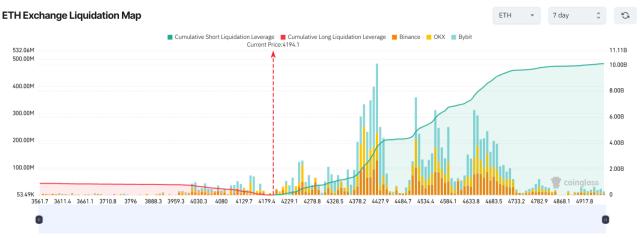Aster - Binance's new crown prince
This generation of Perp DEX is fundamentally different from the "GMX, DYDX" generation of Perp DEX. Since the core is still Perp DEX, the title will still use Perp DEX to discuss it.
Aster secured a resounding victory in the first phase of the TGE. The airdrop-pump-and-wealth-creation formula proved once again to be the ultimate marketing tactic. Aster garnered significant exposure and users, while also siphoning off Hyperliquid, once again perfectly showcasing the power of cash .
Next, the community will focus on Aster's second growth curve after the TGE, namely the growth and retention of real trading users and transaction fee income. After all, pumping up the market with non-real transaction fee income is short-term and unsustainable.
Aster and Hyperliquid product/technology comparison
Hyperliquid = A full-chain CLOB exchange on self-developed L1.
Aster offers a dual-mode model, catering to both beginners and professionals (Pro = order book, 1001x Simple = one-click/AMM-style) with multi-chain access, and is on the road to developing its own L1 (Aster Chain). The 1001x Simple model is targeted at newcomers and light users, offering fool-proof one-click trading, making it a great product for attracting new users.
Hyperliquid offers on-chain matching and is quantitative-friendly, with better performance and liquidity than Aster. Aster's Pro mode has stealth orders/MEV resistance, making it suitable for funds that do not want to expose their orders and directions.
The basic fee ranges of the two are similar, with Aster's basic rate being slightly lower (Aster maker 0.01% / taker 0.035%, Hyperliquid maker 0.01% / taker 0.045%). Hyperliquid can use HYPE staking to reduce fees (up to 40%), and Aster offers VIP level discounts.
Hyperliquid uses its own bridge for deposits and withdrawals, supports Arbitrum USDC deposits, and withdrawals are fixed at 1 USDC; Aster has a strong "mind-free bridging" multi-chain entry, supporting user access to multiple chains such as BNB chain, Ethereum, Arbitrum, Solana, etc., which is more than Hyperliquid.
In terms of product extension, Hyperliquid has spot trading, user/protocol treasury (HLP), and launched the "bidding system" issuance of USDH stablecoin (Native Markets won the USDH code position). Aster has spot trading, extended to stock/index perp, income collateral (asBNB/USDF) and privacy execution.
Technically, Aster focuses on "dark pools" to protect privacy. The Hidden Orders feature, proposed by Product Manager CZ, has been launched. This feature allows users to completely hide their limit orders from the order book (quantity and direction are not disclosed), using privacy technology to prevent large orders from being tracked.
I've also discussed the "hide order" feature with a friend who works in exchange product development. There are pros and cons. While some institutions and large investors may need to hide their identities, it reduces the potential for public scrutiny, eliminates the hype and exposure, and sacrifices some of the principles of openness and transparency. This can lead to incomplete on-chain information and prevent ecosystem partners from conducting comprehensive data analysis. Jeff and CZ hold completely different views on this. In short, Aster prioritizes privacy , but whether the market will buy in remains to be seen.
Compared with Hyperliquid, Aster's depth of mid- and long-tail assets is slightly insufficient, but this is not a problem for Binance. Liquidity is Binance's strength, and Binance will certainly continue to provide liquidity to Aster.
Aster offers grid trading, while Hyperliquid lacks. Aster also offers hedging, while Hyperliquid lacks. Neither platform offers a "unified account," a powerful tool for improving fund utilization. However, with Binance's support, Aster will be able to implement it more easily in the future, a weakness of Hyperliquiquid. Overall, the functional differences are minimal.
For margin, Aster uses USDT (mostly used in the Chinese-speaking region) and Hyperliquid uses USDC (mostly used in the European and American compliant markets). This aligns with the Hyperliquid community being strong in Europe and the US, while the Aster community is strong in Asia. Perhaps Aster, as it seeks to expand into the European and American compliant markets, could consider using USDC.
Aster and Hyperliquid Token Economics Comparison
Distribution and dilution paths
ASTER directly airdrops 53.5% (the full scale, 20% more than HYPE) to the community, the team only has 5% and a 1-year cliff + 40-month linear release; the total amount is fixed at 8B, and APX→ASTER is migrated 1:1 to be included in the ecological pool. More is unlocked in the early stage, but the long-term dilution is more controllable.
HYPE's initial 1B cap (the current proposal suggests removing the cap and significantly reducing supply) is highly community-oriented (31% Genesis airdrop + 38.888% FECR to be issued), and 23.8% of core contributors will be linearly unlocked over 24 months starting from 2025-11-29, with significant unlocking pressure in the medium and short term.
Value return mechanism
HYPE forced buyback/buyback-destroy flywheel: A large portion of protocol fees goes to the Assistance Fund (AF) to buy back HYPE in the secondary market. Multiple studies suggest 92–97% of fees are used for buybacks or related mechanisms, but official figures are not fixed and time periods vary widely, so please refer to the on-chain data. Bull markets amplify, bear markets contract.
ASTER explicitly states that "part of the protocol revenue will be used for ASTER repurchase + governance reward distribution." The pace is more policy-oriented and governance-adjustable, and is parallel to APX migration and airdrop release.
Impact of recent changes on price structure
HYPE: Arthur Hayes reminds that approximately US$11.9 billion worth of tokens will be unlocked in the next 24 months (core contributors will receive a linear 24-month payment starting from 2025-11-29). Some whales have withdrawn/moved tokens early, which has attracted attention.
Jon initiated a proposal in the community < Proposal to Reduce HYPE Total Supply by 45% >: revoke the unissued authorization of FECR (Future Community Rewards), destroy the holdings of the aid fund and subsequent income, and remove the 1 billion cap - if passed, the nominal total amount will drop by >45%, but it will be continuously issued; the net effect depends on the specific details and the probability of approval.
Summary of the proposal:
"We propose the following changes to Hyperliquid's economic model:
- Future Emissions & Community Rewards (FECR) - Revoke authorization for all unminted HYPE currently allocated to FECR.
- Assistance Fund (AF) - Burn all HYPE currently held in the AF. Burn all HYPE acquired by the AF on an ongoing basis.
- Max Supply - Remove the max supply cap of 1bn HYPE. Ongoing token issuance (eg, for staking emissions or community rewards) would now increase the total supply.
The result is an immediate >45% reduction in HYPE’s total supply.”
This is a very bold and innovative proposal. Huge reserve pool selling pressure is a common problem in all token models.
- In the HYPE token model, future community rewards comprise approximately 38.89% of the initial distribution, a potential source of dilution of greatest concern to the market. The proposal directly eliminates the long-term unlocked supply ceiling.
- AF (Assistance/Boosting Fund) changed to "buy back and burn": AF used to use its income to buy back HYPE in the secondary market and hold it; according to the proposal, all HYPE already held and subsequently purchased will be burned, changing from "inventory/treasury" to permanent destruction, continuously forming buying pressure but no longer accumulating chips.
- Cancel the 1 billion cap + continuous issuance: In the future, staking rewards, community incentives, etc. will be used through continuous issuance according to rules (inflation track), rather than using a huge reserved pool.
Next, we’ll see how the team and Jeff respond. At least the second point is fairly easy to implement. If there’s a substantive response to offset the negative impact of the massive unlock on November 29, 2025, HYPE’s price is expected to stabilize and rise.
ASTER: Driven by the APX↔ASTER migration, the multi-chain narrative after the TGE, and celebrity endorsements (Mr. Beast and CZ), it boasts high short-term liquidity and high volatility. However, the team's stake is low, with the majority going to the community and ecosystem, resulting in a more transparent long-term dilution path. However, the buyback activity driven by actual transaction fee income still lags far behind Hyperliquid.
Aster and Hyperliquid distribution channel comparison
In terms of distribution channels, Aster and Hyperliquid have "paradigm" differences and are on two different tracks.
Aster: It's more of a " people are divided into groups " model, with user-to-user referral rebates. If you bring in new users, the platform rebates a percentage of the referral's trading fees. This relationship is account-bound, has an expiration date, and is often tied to points/team bonuses. This is an extension of the CEX invitation system on DEXs. Essentially, it's a channel-based reward system for attracting new users, but it relies too heavily on KOLs and requires a competitive advantage with different CEXs.
Hyperliquid: A more " product-based usage" model , where front-end → user-level infrastructure charging is implemented. You create a front-end/interface, placing orders using your Builder Codes. Each order can be topped up with a Builder Fee (settled on-chain, with a user-authorized cap that can be revoked at any time). Builders receive 100% of this fee, eliminating the need for secondary distribution on the platform. This isn't a "commission based on new user acquisition," but rather a model where you, as the "infrastructure/application," directly set the price. This transforms DeFi developers into distribution partners, forming a B2B2C distribution network. (See some Builder Codes data in the first article.)

For this order, as the Builder Codes builder, I earned 0.15 USDC. (My commission was set at 6bps, with an increase of 1.5bps. I can flexibly adjust it to increase or decrease, but the maximum increase is 10bps.)
In addition, the Staking Referral should be able to be added to the builder. For example, the fee discount I get by staking HYPE can be passed on to users as a benefit by the builder. However, I need to confirm the details here.
While Hyperliquid does offer referral rebates, a "two-tier distribution" of Builder Codes + Referrals, the maximum Referral commission is only 10% and is capped at a certain amount, making it a minor consideration. This was covered in detail in the first article.
As mentioned earlier, the 1001x Simple model is a great way to attract new products. If Aster can develop and connect this product to more DeFi distribution front-ends, we would be happy to participate in the distribution and make money together.
Finally, let me open my mind and talk about it
Aster has officially been upgraded from "son" to "crown prince," destined to inherit the throne in the future, potentially forming a dual-core engine of BNB and Aster. Aster Chain may even integrate with BNB Chain, creating the ultimate form of Aster L1.
Hyperliquid L1= Hyperliquid core + Hyperliquid EVM
Aster L1 =Aster Chain + BNBChain
Final Summary
In a comprehensive comparison, Hyperliquid L1 is already complete, while Aster Chain has yet to launch. Hyperliquid's real transaction volume and OI currently far exceed Aster's, and its community and ecosystem are also currently ahead. Hyperliquiqui's true strength lies in the HIPs (HIP-3 and HIP-4 have enormous potential) built by the entire community and ecosystem partners. We look forward to Aster L1's swift completion and the subsequent introduction of AIP-1, AIP-2, and AIP-3...
Simply put, Hyperliquid currently leads Aster by a generation, similar to the lead of a fifth-generation aircraft over a fourth-generation aircraft. However, in a comprehensive, systemic battle, the fourth-generation aircraft won't necessarily lose; the ultimate battle will come down to ecosystem collaboration. Who will ultimately become the "AWS of Liquidity" remains to be seen .
The gods are fighting, where is the way out for other Perp DEX, next article Lighter.
For details, please see the next article: "In-depth analysis of Perp dex: Hyperliquid, Aster, Lighter, edgeX (3)"
(The above is just my personal opinion, not investment advice. Please point out any errors.)







